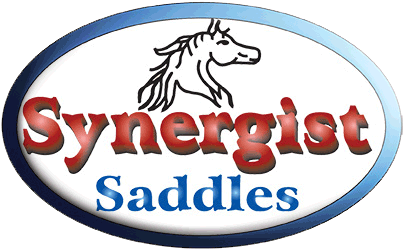Last month we talked about what we can learn about a horse or mule when looking from the side. This month we’ll look at what information can be gained by looking straight down the back just over the rump.
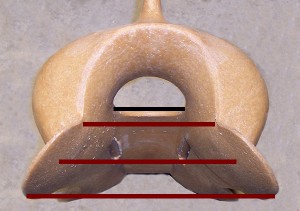 One of the first things we look at is just the overall width of the body between the back of the shoulder blade and the hip. We look closely at the angle that the ribs come down from the spine. This tells us what the spread of the bars should be. Narrow backs need the bars to be closer together and wider backs need more spread in the bars. If you listen to a lot of barn talk you almost always hear people refer to gullet width. Gullet widths are a very inconsistent way to compare trees. Some people measure the distance between the top of the pads that sit right behind the shoulder blades. Other measure the center of the pad while sill others measure at the bottom. You could end up with three different measurements on the same tree!
One of the first things we look at is just the overall width of the body between the back of the shoulder blade and the hip. We look closely at the angle that the ribs come down from the spine. This tells us what the spread of the bars should be. Narrow backs need the bars to be closer together and wider backs need more spread in the bars. If you listen to a lot of barn talk you almost always hear people refer to gullet width. Gullet widths are a very inconsistent way to compare trees. Some people measure the distance between the top of the pads that sit right behind the shoulder blades. Other measure the center of the pad while sill others measure at the bottom. You could end up with three different measurements on the same tree!
The overwhelming majority of custom tree and custom saddle makers use the width of the hand hole at the top of the bars. You can only get one measurement this way and it translates well from tree maker to tree maker. As you can see in the picture the hand hole width is the only measurement even close to the actual distance between the bars of the tree. Except in rare cases you will see hand hole widths range from 3.5 inches on the narrow side up to 4.5 inches on the very wide side.
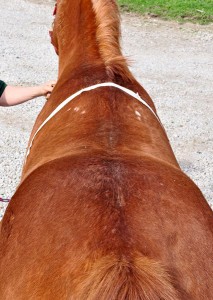 You can see what happens when you put too narrow of a tree on a wide backed horse. The tree perches on top of the back leaving behind the tell tale white spots caused by extremely high pressure in a very small area. The starting angle of the bars needs to be wider as well as the spread for wider backed horses or mules. Keep in mind that trying to fix a narrow tree on a wide back by ‘padding up’ more never works. It actually closes in the gullet and creates even more pressure.
You can see what happens when you put too narrow of a tree on a wide backed horse. The tree perches on top of the back leaving behind the tell tale white spots caused by extremely high pressure in a very small area. The starting angle of the bars needs to be wider as well as the spread for wider backed horses or mules. Keep in mind that trying to fix a narrow tree on a wide back by ‘padding up’ more never works. It actually closes in the gullet and creates even more pressure.
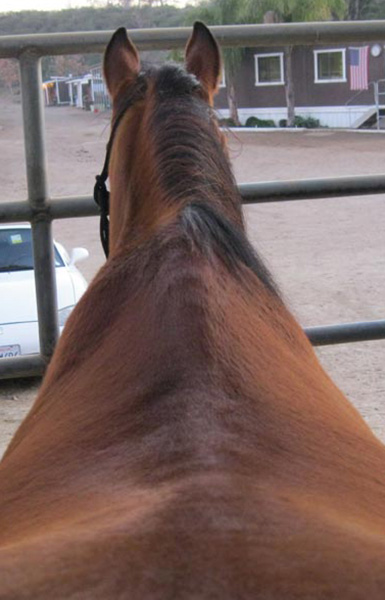 Here is a horse with a narrow back. This animal can’t tolerate a tree with wide angle and wide bar spread for a couple of reasons. First, if the tree is too wide it will tip down in front. This is because the rigging on a saddle is forwards of center and will tilt the saddle down and lift the back off of the horse. When the rider gets on and his weight pushes the back of the saddle down, it becomes like a crowbar and puts extreme pressure behind the shoulder blade. A tree that is too wide for a horse or mule can also cause pressure spots right behind the shoulder blades. The second thing that happens is the bottom edges of the bars will have little or no contact with the rib cage and pressure will load up at the top of the bars. Also there will be little or no clearance above the wither right at the front of the tree.
Here is a horse with a narrow back. This animal can’t tolerate a tree with wide angle and wide bar spread for a couple of reasons. First, if the tree is too wide it will tip down in front. This is because the rigging on a saddle is forwards of center and will tilt the saddle down and lift the back off of the horse. When the rider gets on and his weight pushes the back of the saddle down, it becomes like a crowbar and puts extreme pressure behind the shoulder blade. A tree that is too wide for a horse or mule can also cause pressure spots right behind the shoulder blades. The second thing that happens is the bottom edges of the bars will have little or no contact with the rib cage and pressure will load up at the top of the bars. Also there will be little or no clearance above the wither right at the front of the tree.
The next thing we can tell from the back view is how steep the angle is right behind the shoulder blade. Around the barn they call this the ‘wither pocket’ although very wide backed, low withered animals usually will have little or no actual pocket here. This area determines the starting angle of the bars. The steeper the animal is here, the narrower the angle of the tree needs to be.
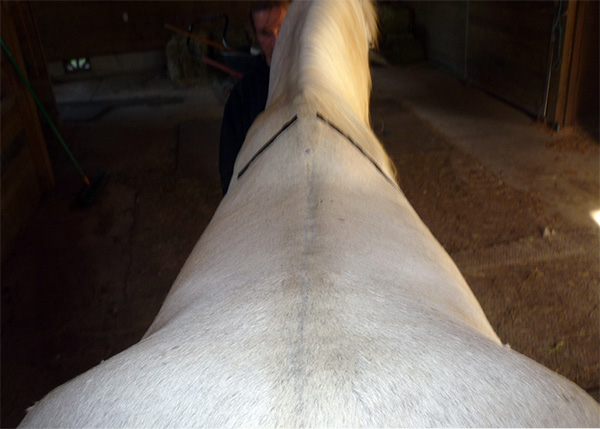 Lastly we can see change in the angle of the back starting from the front as it flattens out towards the back. This determines the twist the bars of the tree. The twist of the bars is what causes the majority of saddle fit problems with production line saddles. A lot of people in the horse world have been sold the notion that all you have to do is get a saddle that was built on the correct width tree and you’re good to go. Pick from narrow, medium or wide and head on down the trail. The twist of the bars has to match the twist of the horse’s back or there’s going to be trouble. The average narrow production line tree doesn’t have enough twist in it for a horse who is narrow in the front but broad towards the back of the rib cage.
Lastly we can see change in the angle of the back starting from the front as it flattens out towards the back. This determines the twist the bars of the tree. The twist of the bars is what causes the majority of saddle fit problems with production line saddles. A lot of people in the horse world have been sold the notion that all you have to do is get a saddle that was built on the correct width tree and you’re good to go. Pick from narrow, medium or wide and head on down the trail. The twist of the bars has to match the twist of the horse’s back or there’s going to be trouble. The average narrow production line tree doesn’t have enough twist in it for a horse who is narrow in the front but broad towards the back of the rib cage.
The bottom line is that you have to treat each horse or mule as an individual and make sure the entire bottom of the tree reflects that individual back.
